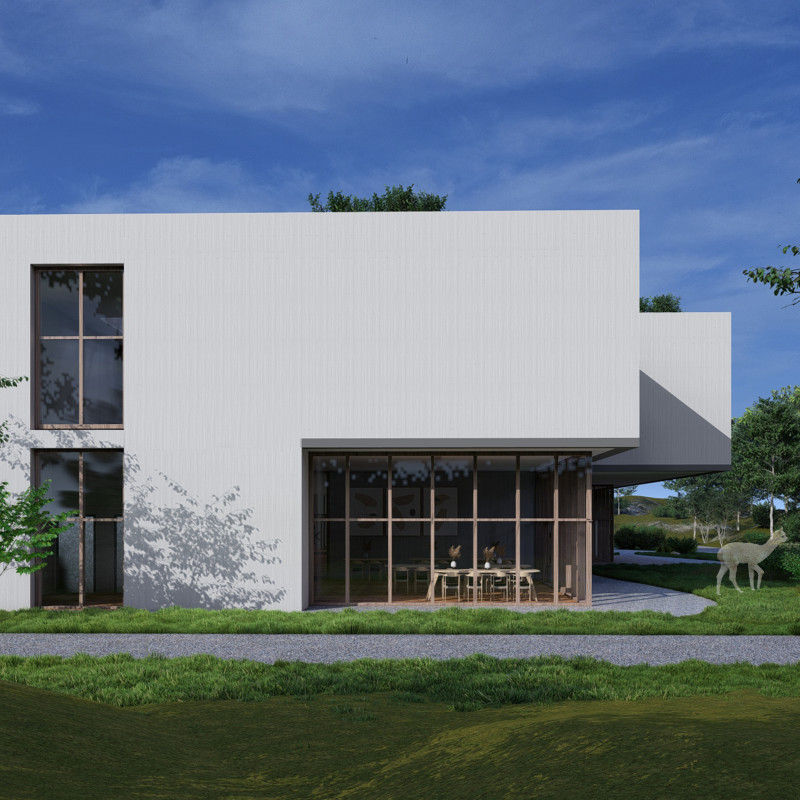5 key facts about this project
At the core of this project is a commitment to sustainability and environmental consciousness. The design effectively utilizes natural light, incorporating large windows and skylights that not only enhance the aesthetic appeal but also reduce the need for artificial lighting during the day. This feature is reflective of a broader trend within the architectural community that seeks to minimize energy consumption through intelligent design strategies.
The materials selected for this project are integral to its identity. A combination of reinforced concrete, reclaimed wood, and glass has been employed to create a façade that is both durable and visually engaging. The use of concrete provides a robust structural framework, while the reclaimed wood offers warmth and aesthetic contrast, contributing to an inviting atmosphere. The glass elements serve not only a functional purpose by allowing extensive natural light but also establish a visual connection between the interior spaces and the surrounding environment, blurring the lines between indoor and outdoor living.
The layout of the project is meticulously planned to optimize space utilization while ensuring a natural flow between various areas. Open-plan living spaces foster connectivity and engagement among occupants, making it ideal for both social interaction and individual retreat. Furthermore, private areas are strategically placed to provide tranquility, emphasizing the thoughtful balance of communal and personal spaces within the design.
Unique design approaches are evident in the integration of green spaces, both creative and functional. Rooftop gardens and vertical plant installations are notably featured, contributing to biodiversity and enhancing air quality. Such elements highlight a growing awareness of nature’s importance in urban settings, allowing residents to engage with the outdoors and promoting a healthier lifestyle.
The architectural design reflects a strong connection to its geographical location, taking into consideration local climate, cultural heritage, and community needs. This consideration is apparent in the choice of materials and the orientation of the building, both of which are responsive to the local environment. By incorporating regional characteristics into the design, the project not only serves its intended function but also contributes to a sense of place, underscoring the importance of local identity in architecture.
In terms of architectural details, attention to craftsmanship is apparent throughout the project. The careful selection of finishes, meticulous attention to joinery, and the integration of technology enhance both the utility and visual appeal of the spaces. Features such as smart home technology have been discreetly woven into the design, promoting convenience while maintaining aesthetic integrity.
Each aspect of this project demonstrates an awareness of architectural ideas that prioritize sustainability, community, and user experience. The overall design thus stands as a reflection of a modern architectural ethos that balances innovation with practicality.
For those interested in delving deeper into the intricacies of this project, exploring the architectural plans, architectural sections, and visual representations will provide critical insights into the design process and the thought behind unique architectural elements. This project exemplifies the potential of architecture to embrace functionality while respecting the environment and enhancing the quality of life for its occupants. It stands as a testament to what thoughtful design can achieve in today’s context, inviting further exploration and appreciation of its architectural innovations.


 Dominika Magdalena Niewęgłowska
Dominika Magdalena Niewęgłowska 




















